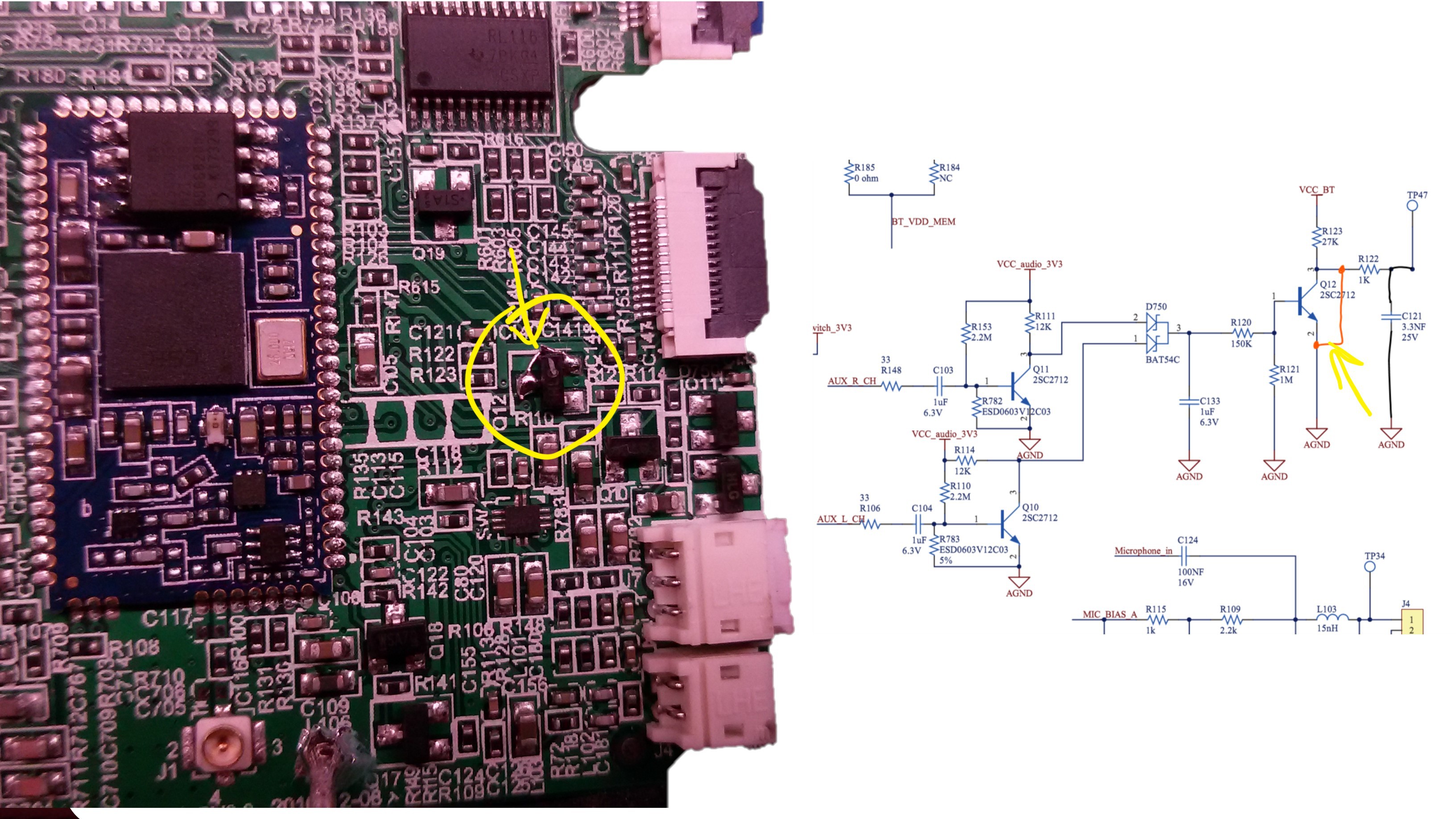The speaker has an annoying habit of blocking aux sound when the signal is very low, causing annoying dropouts when playing quiet passages, watching movies and talking over skype.
Guess what, the detection of audio signal is done in analog! so we can easily hack it, so that it thinks audio is always coming in.

It's just a matter of shorting out Q12 transistor's collector to emitter.
After doing this, I anticipated some problems with Bluetooth. There are, but they are minor.
+ I can still connect to BT, and pair new devices. The speaker doesn't make pairing sounds, though.
+ whenever Bluetooth plays, aux input is inhibited automatically. As soon as BT audio stops, aux input works again.
A nice hack! A better way would be to use jack to provide the signal whenever a cable is plugged in. It can be done, but requires desoldering the connector, and adding an additional connector to the board (or just permanently soldering a bunch of wires). But this easy one is good enough, IMO.
I also notice, input stage of this audio detector circuit presents serious nonlinear load to the audio source. This may cause distortion if source impedance is high. So, consider removing 33-ohm resistors if you apply this hack.
 DeepSOIC
DeepSOIC
Discussions
Become a Hackaday.io Member
Create an account to leave a comment. Already have an account? Log In.
Would it be possible to keep the functionality of this transistor, but extend the auto-off time limit from about 1.5sec to 5sec - or even 10 sec ?
Are you sure? yes | no
I presume the signal detection is there for a reason, such as saving battery when not being used. Have you compared the battery life after this hack?
Are you sure? yes | no
Yes, the battery life will likely be reduced, because it won't turn the amplifier off when there is no sound coming.
I have not done any comparisons. I hacked the hell out of it too fast.
Are you sure? yes | no
Spot on hack. I am having this exact problem. Is there a teardown tutorial somewhere for this device?
Are you sure? yes | no
Initial steps of disassembly are well explained in ifixit:
https://www.ifixit.com/Guide/JBL+Flip+4+Battery+Replacement/114461
It doesn't explain how to get the board out. Here's how:
1. Unscrew loudspeaker drivers. Desolder wires from them. Note the polarity.
2. unplug all connectors from the board. 1 for battery, 1 for Bluetooth, 3 wire bundles going to connector board, 2 flat flex connectors going to buttons. Note the orientation of flat-flex cables, it is difficult to figure it out when assembling back.
3. Slide the board out. It goes only one way out. It is glued in slightly.
Assembling it back, it is sometimes tricky to plug some connectors back in. But otherwise, it is straightforward.
Are you sure? yes | no
For the JBL Charge 4 you can use the same hack on Q102
Are you sure? yes | no
I haven't been into charge 4, I have no idea.
Are you sure? yes | no
Can confirm. Tried it on my JBL Charge 4 just now and it worked
Are you sure? yes | no